Also known as Gum Arabic, Acacia Senegal Gum Extract is an eco-friendly polymer that cosmetic chemists use to help thicken formulations. This thickening agent also provides a velvety texture to skincare formulas which glide onto the skin.
Acacia Senegal Gum Extract is derived from the Acacia Senegal plant—a legume rich in oligosaccharides and glycoproteins. Because it is a naturally-occurring polymer made up of polysaccharides, Acacia Senegal Gum Extract helps attract water to the skin—leaving it feeling moisturized and firm. Acacia Senegal Gum Extract has the added benefit of being a film former, which leaves skin feeling smooth.
The ultimate Ingredient Library you never knew you needed... until now!
Start ExploringA
Acacia Senegal Gum Extract
Alcohol Denat
Alcohol denat helps in the formulation of skincare and cosmetics. According to our experts, it helps products spread easily and absorb quickly and acts as a preservative. Because it removes oils from the skin, it can also help other ingredients penetrate better
Aloe Barbadensis Leaf Extract
Aloe Oil may be used for cutaneous dryness to assist in moisturization
after exposure to sun and other harsh elements. It is completely oil miscible and contains no preservatives or coloring agents. Completely natural! It is an emollient skin conditioning agent that also has barrier repair and anti-inflammatory properties and that exhibits substantivity to skin and hair. It is a useful addition to formulae wherever the legendary healing benefits of aloe vera are desired.
Alumina
Alumina—also known as aluminum oxide—is a white powder that is derived from corundum crystals in the earth. It is composed of aluminum and oxygen molecules bonded together. Cosmetic chemists use Alumina as an exfoliant and opacifying agent in skincare formulas.
Alumina comes in various particle sizes. Cosmetic chemists select different particle sizes depending on the desired results in the formula. Larger-sized Alumina is perfect for exfoliating products, since the individual grains are hard yet smooth in shape. This gives microdermabrasion-like results on skin.
Raw material suppliers often coat smaller particle sizes of Alumina with other colored pigments to help the Alumina-bound pigments glide more easily on skin. This type of Alumina is used in color cosmetics. Cosmetic chemists often use Alumina in skincare formulations as an opacifying agent to make lotions or creams appear less translucent.
Aminomethyl Propanol
Aminomethyl Propanol is a type of aliphatic alcohol— a straight chain alcohol. Cosmetic chemists use Aminomethyl Propanol to adjust or buffer the pH of a formula. Having the correct pH boosts the stability of the formula. Aminomethyl Propanol may also increase the penetration of other ingredients in skincare formulas.
Anhydroxylitol
Anhydroxylitol acts as a moisturizing and restructuring agent in skincare formulations. This humectant helps reduce trans-epidermal water loss (TEWL) and strengthen the skin’s natural barrier function.
Anhydroxylitol is a 1-2 punch when it comes to moisturization—significantly helping the skin absorb and retain moisture. This in turn helps strengthen the skin’s protective barrier against environmental damage. Due to the reinforced protective barrier, Anhydroxylitol provides both immediate and long-lasting hydration at the same time—resulting in smooth, conditioned, healthy skin.
Anhydroxylitol may increase the water reserves in the skin—including the synthesis of Hyaluronic Acid. Anhydroxylitol may help other ingredients penetrate the skin more easily.
Avena Sativa (Oat) Kernel Extract
Avena Sativa (Oat) Kernel Extract contains phenols which are responsible for its antioxidant and anti-inflammatory properties. The phenolic anti-inflammatory agents in this extract are called avenanthramides. Avenanthramides help mediate the anti-irritant effects of Avena Sativa (Oat) Kernel Extract by reducing redness on the skin. Avena Sativa (Oat) Kernel Extract is regarded as an antihistamine.
Avena Sativa (Oat) Kernel Extract strengthens the skin’s natural barrier. By doing so, this extract acts as a skin protectant. It moisturizes and soothes dry, irritated skin.
Avena Sativa (Oat) Kernel Extract contains beta glucans. Beta glucans can improve skin hydration and stimulate collagen production in anti-aging skincare formulas.
B
Betaine
Betaine helps to improve water retention, increase hydration, and soothe and protect the skin.
Betaine assists the human body’s natural osmosis process of balancing water. As an osmolyte, Betaine functions by helping support cell water balance and drawing moisture to the skin.
Betaine quenches rough, dry skin and improves softness with its hydrating and skin-plumping properties. By rehydrating and plumping the skin, Betaine helps strengthen the skin’s natural barrier properties. Betaine’s moisturizing properties nourish the skin—resulting in a dewy, youthful appearance.
Due to these excellent moisturization properties, cosmetic chemists add Betaine to anti-aging skincare formulas to help reduce the visible signs of aging including fine lines and wrinkles.
Bisabolol
Bisabolol is a naturally-occurring compound found in the medical plant German chamomile (Matricaria chamomilla) and the Candeia tree (Eremanthus erythropappus) in Brazil. Bisabolol packs a punch in leave-on skincare formulas due to its soothing, hydrating, anti-aging, and antimicrobial qualities.
Bisabolol soothes and calms the skin—reducing redness and irritation. Packed with antioxidants, Bisabolol is often used in anti-aging skincare formulas to protect the skin from damage caused by free radicals. Bisabolol neutralizes surface free radicals that contribute to signs of premature aging. Bisabolol may improve the firmness of the skin. In addition, this compound is often used to help even skin tone and reduce the appearance of dark spots as it is believed to inhibit melanin synthesis.
Bisabolol may stimulate the skin’s natural healing responses. Bisabolol also helps hydrate dry, flaky skin. It is also thought this naturally occurring compound has antimicrobial properties.
C
Caprylic/Capric Triglyceride
Caprylic/Capric Triglyceride is a fatty acid that contributes to the texture and emolliency of skincare products. The oily texture of Caprylic/Capric Triglyceride is a favorite amongst cosmetic chemists as it enhances the spreadability of skincare formulas. This texture imparts a smooth feeling on skin. Caprylic/Capric Triglyceride can be used to increase the viscosity of a skincare formula.
Caprylic/Capric Triglyceride also functions as an emollient in skincare formulas for dry skin. Caprylic/Capric Triglyceride offers emolliency properties—smoothing, softening, and hydrating skin by trapping moisture in the epidermis. By helping prevent transepidermal water loss (TEWL), Caprylic/Capric Triglyceride improves the texture of skin and helps restore the skin’s natural protective barrier.
While not often used as a preservative, Caprylic/Capric Triglyceride offers antioxidant properties that can minimize the need for more intense preservative systems in emulsion formulas.
Caprylhydroxamic Acid
Caprylhydroxamic Acid is a natural chelating agent that is used in skincare formulas as a preservative to help reduce microbial growth. As a chelating agent, Caprylhydroxamic Acid captures potentially harmful metals in products. Caprylhydroxamic Acid also interacts with the cell walls of yeast and mold—destroying them—which keeps skincare products safe from contamination. It is believed this preservative does not disrupt skin’s naturally occurring microbiome.
Caprylhydroxamic Acid is not often used alone. Cosmetic chemists formulate with Caprylhydroxamic Acid in conjunction with other antimicrobial ingredients—such as Caprylyl Glycol or Benzyl Alcohol—for protecting products from bacteria, yeast, and mold. This extends the shelf life of skincare formulas and helps keep them safe for consumer use.
Caprylyl Glycol
Caprylyl Glycol is a naturally occurring emollient and humectant that is derived from a fatty acid. This eight-carbon acid is considered a medium chain triglyceride (MCT) before it is converted into a glycol. As a glycol, it helps keep skin feeling hydrated and moisturized. Caprylyl Glycol functions as a humectant—attracting water to the skin and helping trap moisture in the skin.
Caprylyl Glycol also functions as a natural antimicrobial. Caprylyl Glycol interacts with the cell walls of bacteria to destroy them—helping keep skincare products safe from microbial growth. Cosmetic chemists use Caprylyl Glycol in conjunction with other antimicrobial ingredients like Caprylhydroxamic Acid in emulsion formulas to be effective against yeast and molds. This extends the shelf life of skincare formulas and keeps them safe for consumer use.
Carbomer
Carbomer refers to a series of polymers derived primarily from acrylic acid. Carbomer is a thickening agent that affects the viscosity and rheology of skincare formulas. Carbomer is able to absorb and retain large amounts of water—swelling to multiples times its normal size. These absorption properties make Carbomer an effective ingredient to use when creating smooth, silky, gel-like textures in skincare formulas.
In addition, Carbomer can be present in a formula as an emulsifier as it can distribute or suspend an insoluble solid in a liquid. Carbomer improves the stability of skincare emulsion formulas.
Ceramide NG
Ceramide NG is one of the 9 types of ceramides that naturally occur in the stratum corneum—the upper layer of the epidermis. Ceramides make up 40-50% of the skin’s extracellular matrix. Skincare formulas featuring Ceramide NG may help prevent transepidermal water loss (TEWL) and hydrate the skin. In skincare formulas, Ceramide NG is used as a humectant to capture and retain water required for the epidermal equilibrium—resulting in soft, supple skin.
By restoring epidermal equilibrium and moisturizing the skin, Ceramide NG helps reinforce the structure of the epidermis to better resist aggressions.
Ceteareth-20
Ceteareth-20 is the polyethylene glycol ether of cetearyl alcohol. Ceteareth-20 functions as an emulsifier, surfactant, and texture enhancer in skincare formulas. Due to its water-loving hydrophilic head and oil-loving hydrophobic tail, Ceteareth-20 makes an excellent emulsifier. Due to its emulsification and surfactant properties, Ceteareth-20 enhances the stability and shelf life of emulsion formulas.
Cosmetic chemists also use Ceteareth-20 to increase the viscosity of skincare formulas and improve the texture of the formulas on skin.
Cetearyl Alcohol
Cetearyl Alcohol is a blend of fatty alcohols—primarily cetyl and stearyl alcohols. Cosmetic chemists use Cetearyl Alcohol as an emollient, viscosity-increasing agent, emulsifier, and surfactant in skincare formulas.
A common misconception is that all alcohols are drying to the skin. The opposite is true for Cetearyl Alcohol thanks to the long oil-soluble tail in its molecular structure. Used as an emollient, Cetearyl Alcohol helps moisturize by protecting the skin from transepidermal water loss (TEWL). This helps soften, smooth, condition, and hydrate dry, flaky skin.
Chemists often use Cetearyl Alcohol to improve the texture and sensory feel of formulas as Cetearyl Alcohol offers excellent thickening properties.
Due to Cetearyl Alcohol’s ability to reduce the surface tension between two substances, Cetearyl Alcohol can function as an emulsifier or a surfactant. This helps stabilize emulsion formulas and improves the shelf life. Cetearyl Alcohol boosts the foaming capabilities of formulas designed to cleanse the skin.
Cetyl Ethylhexanoate
Cetyl Ethylhexanoate is an ester of cetyl alcohol and 2-ethylhexanoic acid. Cetyl Ethylhexanoate functions as an emollient, thickener, and texture enhancer. Due to its excellent emolliency properties, Cetyl Ethylhexanoate hydrates and softens skin. Cetyl Ethylhexanoate forms a protective barrier on skin—helping reduce the evaporation of the natural moisture content of the skin and moisturizing the skin. This is particularly effective in skincare formulas aimed at hydrating dry, flaky, aging skin.
Due to its ability to create a barrier, Cetyl Ethylhexanoate can improve the spreadability of skincare formulas. Cosmetic chemists utilize Cetyl Ethylhexanoate to impart a lightweight, smooth, silky feel to anti-aging skincare formulas. Formulators also use Cetyl Ethylhexanoate to impact the rheology—or fluidity—of emulsion formulas.
D
Dimethicone
Dimethicone is a silicone-based polymer with alternating silicone and oxygen atoms along a carbon chain. Cosmetic chemists use Dimethicone to enhance the texture of skincare formulas, to temporarily blur fine lines and wrinkles, and to create a protective barrier on the skin. Dimethicone imparts a silky, smooth texture and improves the spreadability of skincare formulas.
Dimethicone creates an occlusive barrier on the skin. By creating a barrier, Dimethicone seals moisture in the skin and temporarily fills in fine lines and wrinkles—providing a hydrated, plump appearance. This occlusive barrier helps protect the skin, prevent moisture loss, and boost the skin’s natural barrier properties. Due to its emolliency benefits, Dimethicone conditions the epidermis—resulting in soft, supple, youthful-looking skin.
Disodium EDTA
Disodium EDTA is a water-soluble chelating agent and preservative added to skincare formulations to prevent oxidation. Cosmetic chemists utilize Disodium EDTA in formulas to prevent ingredients from binding with minerals that can be present at trace levels in water or other raw materials. Disodium EDTA sequesters and reduces the reactivity of metal ions in minerals—such as calcium, zinc, and magnesium—that may be present in a formula.
Disodium EDTA also has preservative properties. By deactivating minerals within the cell, Disodium EDTA inhibits the growth of bacterial biofilms. Bacteria use protective barriers called biofilms to defend against their environment. Without these protective outer membranes, bacteria are unable to grow and multiply.
Due to its chelating and preservative characteristics, Disodium EDTA helps improve the stability and shelf life of skincare formulas.
E
Ethylhexylglycerin
Ethylhexylglycerin is a preservative, surfactant, and skin conditioning agent. Often utilized as a potentiating agent for Phenoxyethanol, Ethylhexylglycerin boosts the antimicrobial effects of Phenoxyethanol—allowing cosmetic chemists to use it effectively at a safe level. Together Ethylhexylglycerin and Phenoxyethanol support the stability and shelf life of cosmetic formulas by helping prevent the growth of bacteria. Ethylhexylglycerin functions by reducing the surface tension on the cellular walls of bacteria and damaging the cell membranes. By damaging the cellular structure of bacteria, bacterial organisms are no longer able to grow and multiply. This antimicrobial function of Ethylhexylglycerin makes it a great deodorizing ingredient as well. Cosmetic chemists use Ethylhexylglycerin to support the safety of skincare products and protect consumers from infection.
Ethylhexylglycerin offers additional benefits of skin conditioning and humectant properties. Ethylhexylglycerin draws water from the ambient environment and helps prevent transepidermal water loss (TEWL). Cosmetic chemists can also use Ethylhexylglycerin to improve the texture of formulas. Ethylhexylglycerin can reduce the tackiness and greasiness of emulsions and improve the rate of penetration into the skin.
G
Glycerin
Glycerin is an excellent humectant that draws water from the environment to hydrate, soften, and protect the skin. Formulators often use Glycerin in skincare products for moisturization, pollution protection, and anti-aging. By moisturizing dry skin and providing an occlusive barrier, Glycerin helps strengthen the skin’s barrier and promote healthy-looking skin. Glycerin may help the skin’s natural lipids retain their structure to further strengthen the skin’s barrier. Glycerin can remain on the skin for a while—hydrating the skin even when exposed to harmful environmental aggressors like pollution.
Glycerin smooths and lubricates the skin. Due to its excellent smoothing properties, this humectant makes skincare products more easily spreadable. The humectant also helps prevent skincare formulas exposed to air from drying out quickly.
Glycerin can temporarily plump skin—minimizing the appearance of fine lines and wrinkles. Glycerin is thought to have the ability to penetrate the skin and increase the water volume between cells—resulting in the appearance of healthier, firmer skin.
Glyceryl Stearate
Glyceryl Stearate is a fatty acid. Glyceryl Stearate is used as a nonionic emulsifier and surfactant to improve the stability of water and oil formulas. Glyceryl Stearate acts as a skin conditioning agent and emollient to lubricate the skin’s surface and soften the skin. This additional hydration helps protect the skin. Glyceryl Stearate improves the texture and sensory feel of skincare formulas.
Cosmetic chemists also use Glyceryl Stearate as a thickening agent to adjust the viscosity of skincare formulas.
Glycine Soja (Soybean) Seed Extract
Glycine Soja (Soybean) Seed Extract is a plant extract rich in amino acids, protein, vitamins, and minerals. Cosmetic chemists often use this plant extract in anti-aging skincare formulas. Glycine Soja (Soybean) Seed Extract contains antioxidant compounds including phenolic acids and flavonoids. Large proteins naturally occurring in soybeans lend excellent skin smoothing and softening properties to skincare formulas. Glycine Soja (Soybean) Seed Extract contains Lysophospholipids, in particular Lysophosphatidic Acid (LPA) which stimulate fibroblasts—promoting collagen synthesis.
Glycine Soja (Soybean) Seed Extract can be used in skincare formulas as a humectant to decrease transepidermal water loss (TEWL) and moisturize the skin. This reinforces the skin’s natural protective barrier and hydrates dry, flaky skin.
H
Hamamelis Virginiana (Witch Hazel) Leaf Extract
Hamamelis Virginiana (Witch Hazel) Leaf Extract is derived from the Witch Hazel (Hamamelis virginiana) shrub native to eastern North America. Many skincare formulas feature Hamamelis Virginiana (Witch Hazel) Leaf Extract for its excellent astringent properties. This extract from the leaves of Hamamelis Virginiana (Witch Hazel) contains large quantities of tannins—polyphenols with anti-inflammatory and antioxidant benefits. These tannins have a drying, astringent effect—tightening the skin’s proteins and promoting healing of microtears on the skin. This protective covering boosts the skin’s resistance to inflammation. In addition, the tannins present in Hamamelis Virginiana (Witch Hazel) Leaf Extract may help neutralize free radicals with their antioxidant properties.
Hamamelis Virginiana (Witch Hazel) Leaf Extract also provides skin conditioning properties. This natural extract can help soothe dry, damaged skin and restore the suppleness of skin.
Hyaluronic Acid;
Hydrolyzed Hyaluronic Acid
Hyaluronic Acid (HA) goes by many names—including Sodium Hyaluronate or Hydrolyzed
Hyaluronic Acid. Hyaluronic Acid is a naturally-occurring polymer in the human body. The majority of Hyaluronic Acid occurs in the dermis—the deepest layers of the skin—and in the epidermis—the outermost 5 layers of the skin. Hyaluronic Acid is a humectant—attracting water to the skin to keep it hydrated and feeling soft and supple. It is believed that Hyaluronic Acid can hold up to 1,000 times its own weight in water.
Hyaluronic Acid comes in many different sizes. The size of the Hyaluronic Acid molecule determines its ability to penetrate into skin. Low or ultra-low Hyaluronic Acid is so small in molecular weight, it can penetrate into the deepest layers of the epidermis. In the epidermis, topical Hyaluronic Acid helps encourage skin’s own native production of Hyaluronic Acid and aid in cellular turnover. Mid-molecular weight Hyaluronic Acid penetrates into the stratum corneum—the outermost layer of the epidermis. In the stratum corneum, Hyaluronic Acid helps promote the production of skin’s Natural Moisturizing Factors (NMFs). This part of the stratum corneum is where hydration is needed most—for skin to look plump and healthy. High-molecular weight Hyaluronic Acid is greater than 500 Daltons and is too large to penetrate the skin. Cosmetic chemists use high-molecular weight Hyaluronic Acid to attract water to the
stratum corneum and improve the skin’s natural barrier functions.
Hyaluronic Acid may be chemically modified to help improve its adherence to the outside of
skin, its penetration into skin, or the amount of water it can attract. Hydrolyzed Hyaluronic Acid
is a large Hyaluronic Acid polymer cut into smaller pieces to improve skin penetration. Because of its ability to penetrate further, Hydrolyzed Hyaluronic Acid can hold water deep in the skin—improving elasticity and softness.
The polymer structure of Hydrolyzed Hyaluronic Acid can also be modified into a crosspolymer. Sodium Hyaluronate Crosspolymer is a much larger polymer than Hyaluronic Acid alone. Raw material suppliers design the crosspolymer to sit on top of the stratum corneum—binding with up to 50 times more water than smaller Hyaluronic Acid molecules. Because this crosspolymer is on top of the stratum corneum, it delivers water to the outermost layer of the skin.
Hyaluronic Acid can also be acetylated—converting it into Sodium Acetylated Hyaluronate. This
derivative of Hyaluronic Acid with an additional acetyl molecule makes the Hyaluronic Acid both hydrophilic and lipophilic. Instead of sitting on top of the stratum corneum, Sodium Acetylated Hyaluronate partially penetrates—helping it adhere to skin better. This partial penetration may increase the efficiency of Sodium Acetylated Hyaluronate at retaining water inside the skin, improving skin’s barrier function, softening skin, and increasing skin elasticity.
It is easy to see why cosmetic chemists formulate anti-aging and moisturizing skincare formulas with Hyaluronic Acid.
M
Magnesium Chloride
Magnesium Chloride is a thickening agent. Cosmetic chemists use Magnesium Chloride to adjust the viscosity of skincare formulas. Magnesium Chloride stabilizes emulsions and small particles—preventing settling and shielding unstable ingredients in the formula. This supports the shelf life of skincare formulas.
Magnesium Chloride delivers multiple beneficial effects to the skin—such as barrier function recovery, hydration, and soothing. Studies have shown that bathing in Magnesium Chloride may reduce skin roughness and inflammation. In addition, Magnesium Chloride may enhance hydration in the stratum corneum—the uppermost layer of the skin.
Since ancient times, people have used Magnesium Chloride to treat dry, rough skin. Modern skincare formulas containing Magnesium Chloride may produce similar effects—reducing redness and transdermal water loss and improving the barrier and texture of the skin.
P
Palmitoyl Tripeptide-5
Palmitoyl Tripeptide-5 is a peptide or small chain of proteins characterized by a string of three amino acids Lys-Val-Lys. Palmitoyl Tripeptide-5 is an effective ingredient in anti-aging skincare formulas due to its skin-firming collagen protection and stimulation properties.
Palmitoyl Tripeptide-5 may stimulate collagen synthesis and simultaneously protect collagen from degrading enzymes. It is believed this tripeptide can communicate with the skin’s collagen production systems–boosting collagen I synthesis in human fibroblasts. Palmitoyl Tripeptide-5 protects collagen by inhibiting the expression of key enzymes responsible for collagen degradation including matrix metalloproteinases (MMP 1 and 3) and proinflammatory cytokines.
Palmitoyl Tripeptide-5’s effect on collagen may smooth and firm the skin—reducing the visible appearance of fine lines and wrinkles. Palmitoyl Tripeptide-5 is believed to be effective in creating youthful-looking skin due to the amino acids’ ability to penetrate the stratum corneum and additional four layers of the epidermis and enter the dermis.
Panthenol
Panthenol—also known as provitamin B5—is a skin conditioning agent and humectant commonly used by cosmetic chemists in skincare formulas. Panthenol is not actually a vitamin itself but rather a vitamin precursor called a provitamin. The human body converts provitamins from inactive forms into useful forms. The human body converts Panthenol into pantothenic acid. The human body cannot produce vitamins, so people have to get them from the outside world. A deficiency of pantothenic acid in skin can result in a variety of dermatological disorders.
As a humectant, Panthenol attracts water to the skin. Panthenol moisturizes the uppermost layer of skin—the stratum corneum—resulting in soft, supple, healthy skin. Panthenol’s role as a humectant also helps keep the skin’s protective barrier intact—combating transepidermal water loss (TEWL). These barrier strengthening properties help reduce the appearance of redness in skin and improve elasticity. This provitamin is non-comedogenic—making Panthenol ideal for acne-prone or sensitive skin. Some scientists suspect Panthenol may have antimicrobial activity.
PEG-100 Stearate
PEG-100 Stearate is a polyethylene glycol ester of stearic acid. Formulators use PEG-100 Stearate as a surfactant and emulsifier to improve the stability of skincare formulas. As a surfactant, PEG-100 Stearate disrupts surface tension—helping water and oil mix effectively. PEG-100 Stearate is often paired with Glyceryl Stearate as an effective emulsifier combination that works across a wide pH range.
PEG-100 Stearate also has skin softening properties. Utilized as an emollient, PEG-100 Stearate may help reinforce the skin’s moisture barrier. The emollient forms a thin fatty layer on the surface of the stratum corneum—hydrating and softening the skin by preventing moisture loss.
Phenoxyethanol
Phenoxyethanol is a broad-spectrum preservative that supports the stability of cosmetic formulas. Utilized in emulsions, Phenoxyethanol helps inhibit the growth of bacteria, fungi, and yeast. Phenoxyethanol is known for its excellent antimicrobial properties as it is effective against many gram-negative and gram-positive bacteria. Cosmetic chemists add Phenoxyethanol at 1% to skincare formulas to support the shelf life and ensure the safety of the formulas.
Phenoxyethanol is a favorite among cosmetic formulators due to its excellent thermal stability (up to 85°C) and ability to function at a wide range of pH levels from 3-10. In addition, most people tolerate Phenoxyethanol well due to its weak inhibitory effect on naturally-occurring skin microbiota.
Polyacrylate-13
Polyacrylate-13 is a polymer with film-forming properties. Cosmetic chemists use Polyacrylate-13 in skincare formulas as a film-forming agent, viscosity-increasing agent, and emulsifier. Due to its ability to swell and absorb water, Polyacrylate-13 boosts the viscosity of emulsion skincare formulas and improves the stability of the formulas.
When combined with polyisobutene and polysorbate 20, this trio forms an efficacious thickening and emulsification blend. This blend of raw materials increases the spreadability of skincare formulas—imparting a texture similar to silicones.
Polyacrylate Crosspolymer-6
Polyacrylate Crosspolymer-6 is a high molecular weight polymer with the ability to deposit over the outer layers of the epidermis. Polyacrylate Crosspolymer-6 helps protect the surface of the skin, thicken water-based emulsions and surfactant systems, and stabilize skincare formulas.
Polyacrylate Crosspolymer-6 mimics the skin's natural lipid barrier—forming an occlusive barrier on the skin. Occlusives inhibit water and natural moisture evaporation from the skin by creating a waterproof coating. By preventing moisture loss from the top layers of the skin, Polyacrylate Crosspolymer-6 hydrates the skin. This occlusive barrier helps protect the skin from external irritants—including friction, cold wind, and pollen. These protective properties may improve the appearance of dry skin and flakiness.
Cosmetic chemists use Polyacrylate Crosspolymer-6 to adjust the viscosity and create gel textures without a tacky residue. Working synergistically with fatty alcohols, Polyacrylate Crosspolymer-6 gels the water in a skincare formula to help suspend particles and oil droplets. This results in a smooth gel texture with a rich, velvety feel.
Polyacrylate Crosspolymer-6 improves particle suspension in skincare formulas—optimizing the delivery of active ingredients and supporting the stability of the formula.
Polyisobutene
Polyisobutene is a synthetic polymer of isobutylene. Cosmetic chemists use Polyisobutene in skincare formulas as a binder, film-forming agent, and nonaqueous viscosity-increasing agent. When combined with polyacrylate-13 and polysorbate 20, this trio forms an efficacious thickening and emulsification blend. This blend of raw materials boosts the spreadability of skincare formulas—imparting a texture similar to silicones.
When used as a thickening agent, Polyisobutene increases the viscosity of the oil phase of skincare formulas. Due to its emulsification properties, chemists add Polyisobutene to formulas to help bind the ingredients together. Polyisobutene forms a film on the skin.
Polysorbate 20
Polysorbate 20 is created in the process of treating sorbitol—a naturally occurring sugar alcohol—with 20 moles of ethylene oxide. Polysorbate 20 is a common emulsifier, nonionic surfactant, and solubilizer. By adding Polysorbate 20 to a skincare emulsion formula, chemists increase the stability and shelf life of the product.
As a water-soluble emulsifier, Polysorbate 20 binds water and oil together. Polysorbate 20 has excellent surfactant properties—disrupting the surface tension between the oil and water phases of skincare formulas. In skincare emulsions, surfactants function by degreasing and emulsifying oils and fats. This helps the skincare formulas mix together and stay fully blended.
Polysorbate 20 has excellent solubilization properties. Cosmetic chemists commonly use Polysorbate 20 as a solubilizer to help essential oils and fragrance oils attach to the base formula. Polysorbate 20 also helps disperse these oils throughout water—preventing the oils from clumping or settling.
When combined with polyisobutene and polyacrylate-13, this trio forms an efficacious thickening and emulsification blend. This blend of raw materials boosts the spreadability of skincare formulas—imparting a texture similar to silicones.
Potassium Sorbate
Potassium Sorbate is the potassium salt of sorbic acid, a naturally-occurring antimicrobial compound. Formulators use Potassium Sorbate as a preservative in emulsion formulas to inhibit the growth of fungi, mold, and yeast. Potassium Sorbate is highly effective at retarding the growth of mold but less effective against bacterial growth. As such, many chemists combine Potassium Sorbate with a broad-spectrum preservative to enhance the shelf life and stability of skincare formulas.
S
Salix Nigra (Willow) Bark Extract
Salix Nigra (Willow) Bark Extract has potent antioxidant and soothing properties and is regarded to help reduce inflammation and redness. This plant extract is used in many skincare formulas to promote clear, smooth, youthful-looking skin by promoting cellular renewal. In addition, Salix Nigra (Willow) Bark Extract may boost collagen synthesis.
Salix Nigra (Willow) Bark Extract is regarded as a natural alternative to salicylic acid—a BHA exfoliant. BHA exfoliants (Beta hydroxy acids) are lipid-soluble ingredients that cleanse the skin and unclog pores. BHAs lightly exfoliate the skin by loosening the layers of the stratum corneum—the outer layer of the epidermis. This process catalyzes the formation of new skin cells—resulting in healthy, glowing, youthful looking skin. As such, Salix Nigra (Willow) Bark Extract may help promote an even skin tone.
Silica
Silica—also known as silicon dioxide—is an absorbent powder and thickener used in skincare formulas. Silica particles vary in size and are spherical in shape with an empty center. This empty center absorbs excess oil in creams—which helps increase the viscosity of the formula and enhance the texture.
Silica also improves the stability and shelf life of the product. Since creams are emulsion mixtures of oil and water which are not compatible, they need to be stabilized. The empty center of the Silica particle stores excess oil, which would otherwise cause instability in skincare formulas. This empty center is also useful to hold skincare active ingredients and deliver them to the skin.
Silica particles can be so large that they function as natural, physical exfoliants. Silica is primarily made by melting silicone dioxide-rich material—like sand—under extreme heat and high pressure.
Sodium Acetylated Hyaluronate;
Sodium Hyaluronate;
Sodium Hyaluronate Crosspolymer
Hyaluronic Acid (HA) goes by many names—including Sodium Hyaluronate or Hydrolyzed
Hyaluronic Acid. Hyaluronic Acid is a naturally-occurring polymer in the human body. The majority of Hyaluronic Acid occurs in the dermis—the deepest layers of the skin—and in the epidermis—the outermost 5 layers of the skin. Hyaluronic Acid is a humectant—attracting water to the skin to keep it hydrated and feeling soft and supple. It is believed that Hyaluronic Acid can hold up to 1,000 times its own weight in water.
Hyaluronic Acid comes in many different sizes. The size of the Hyaluronic Acid molecule determines its ability to penetrate into skin. Low or ultra-low Hyaluronic Acid is so small in molecular weight, it can penetrate into the deepest layers of the epidermis. In the epidermis, topical Hyaluronic Acid helps encourage skin’s own native production of Hyaluronic Acid and aid in cellular turnover. Mid-molecular weight Hyaluronic Acid penetrates into the stratum corneum—the outermost layer of the epidermis. In the stratum corneum, Hyaluronic Acid helps promote the production of skin’s Natural Moisturizing Factors (NMFs). This part of the stratum corneum is where hydration is needed most—for skin to look plump and healthy. High-molecular weight Hyaluronic Acid is greater than 500 Daltons and is too large to penetrate the skin. Cosmetic chemists use high-molecular weight Hyaluronic Acid to attract water to the
stratum corneum and improve the skin’s natural barrier functions.
Hyaluronic Acid may be chemically modified to help improve its adherence to the outside of
skin, its penetration into skin, or the amount of water it can attract. Hydrolyzed Hyaluronic Acid
is a large Hyaluronic Acid polymer cut into smaller pieces to improve skin penetration. Because of its ability to penetrate further, Hydrolyzed Hyaluronic Acid can hold water deep in the skin—improving elasticity and softness.
The polymer structure of Hydrolyzed Hyaluronic Acid can also be modified into a crosspolymer. Sodium Hyaluronate Crosspolymer is a much larger polymer than Hyaluronic Acid alone. Raw material suppliers design the crosspolymer to sit on top of the stratum corneum—binding with up to 50 times more water than smaller Hyaluronic Acid molecules. Because this crosspolymer is on top of the stratum corneum, it delivers water to the outermost layer of the skin.
Hyaluronic Acid can also be acetylated—converting it into Sodium Acetylated Hyaluronate. This
derivative of Hyaluronic Acid with an additional acetyl molecule makes the Hyaluronic Acid both hydrophilic and lipophilic. Instead of sitting on top of the stratum corneum, Sodium Acetylated Hyaluronate partially penetrates—helping it adhere to skin better. This partial penetration may increase the efficiency of Sodium Acetylated Hyaluronate at retaining water inside the skin, improving skin’s barrier function, softening skin, and increasing skin elasticity.
It is easy to see why cosmetic chemists formulate anti-aging and moisturizing skincare formulas with Hyaluronic Acid.
Sodium Hydroxide
Sodium Hydroxide—historically known as lye—is a highly alkaline ingredient that is used to adjust the pH of skincare products. The pH scale ranges from 0-14. A substance with a pH less than 7 is considered acidic. A substance with a pH higher than 7 is considered alkaline. A pH of 7 is considered neutral. Sodium Hydroxide in its pure form has a high alkaline pH of roughly 13.
Skincare products have specific pH values to ensure the safety of the product and extend the shelf life. Most skincare products have pH values between 4 and 7. Sometimes cosmetic chemists adjust the pH of a formula after manufacturing by adding miniscule amounts of Sodium Hydroxide. If the pH of the product is too low, cosmetic chemists add Sodium Hydroxide to adjust the pH higher.
Sodium Phytate
Sodium Phytate is the sodium salt of Phytic Acid—a saturated cyclic acid. Sodium Phytate is used in skincare formulas as a chelating agent due to its ability to neutralize metal ions in emulsions. By binding to free metals and mitigating metal-catalyzed reactions, Sodium Phytate improves the stability and shelf life of skincare formulas.
Sodium Polyglutamate
Sodium Polyglutamate is a humectant made from an amino acid called glutamic acid. Another name for Sodium Polyglutamate is polyglutamic acid. This name indicates that this molecule is made from a polymer of multiple glutamic acid units. Glutamic acid is a hydrophilic amino acid—which means it is water-loving. These hydrophilic properties make Sodium Polyglutamate an excellent humectant in skincare formulas. Sodium Polyglutamate attracts water to the skin—resulting in soft, conditioned, youthful skin.
In addition, Sodium Polyglutamate may help prevent the degradation of skin’s own naturally-occurring Hyaluronic Acid. This further hydrates the skin. It also allows skin to produce more of its own Natural Moisturizing Factors (NMFs). Natural Moisturizing Factors (NMFs) improve the skin’s protective barrier functions and help maintain the natural pH levels of healthy skin.
Squalane
Squalane mimics the oils naturally occurring in skin, making it an effective emollient. Squalane helps increase skin respiration and prevent loss of moisture. Due to its hydrating properties, Squalane makes an excellent emollient that is effective yet lightweight. Used in skincare formulas designed to soften the skin, Squalane hydrates dry, flaky skin without leaving an oily residue.
Due to its ability to function as an oxygen-scavenging agent, Squalane boasts antioxidant benefits. Squalane hinders the effects of oxidative stress on the skin from UV rays and other environmental stressors. By providing antioxidant protection and hydrating the skin, Squalane can help reduce the appearance of fine lines and wrinkles and support a youthful appearance.
Squalane is non-comedogenic and hypoallergenic.
T
Teprenone
Teprenone is an anti-aging ingredient that packs a punch. Teprenone is believed to offer benefits for functional and structural signs of aging. As an emollient, Teprenone hydrates the skin by boosting the integrity of the skin’s natural protective barrier. This reinforced epidermal barrier helps prevent transepidermal water loss (TEWL) and enhances the texture of skin. Teprenone may fade UV spots—evening skin tone and resulting in youthful, healthy skin.
Tetradecyl Aminobutyroylvalylaminobutyric Urea Trifluoroacetate
Tetradecyl Aminobutyroylvalylaminobutyric Urea Trifluoroacetate is a small, proteoglycan-stimulating tripeptide—a polymer of 3 amino acids. This tripeptide boasts anti-aging and skin conditioning benefits in skincare formulas.
According to the in-vitro studies conducted by the raw material supplier, Tetradecyl Aminobutyroylvalylaminobutyric Urea Trifluoroacetate encourages the synthesis of Hyaluronic Acid in the skin. Hyaluronic Acid is a naturally-occurring polymer in the human body that functions as a humectant—attracting water to the skin to moisturize and condition the skin. By boosting the overall Hyaluronic Acid content in the skin, skin appears moisturized, healthy, and firm.
The raw material supplier also reported Tetradecyl Aminobutyroylvalylaminobutyric Urea Trifluoroacetate can improve the quality and strength of collagen fibers in the skin by increasing the expression of two proteoglycans—decorin and lumican. Proteoglycans are protein chains which support the moisturization of the extracellular matrix of the skin. Proteoglycans boost resilience and viscoelasticity and help create a healthy environment conducive to normal cellular functions. Decorin and lumican bind collagen fibers together—providing a plump, firm look to the skin.
Tetrahexyldecyl Ascorbate
Tetrahexyldecyl Ascorbate is a stable, oil-soluble form of Vitamin C. Tetrahexyldecyl Ascorbate is believed to be an analog molecule to L-ascorbic acid— the form of Vitamin C the human body utilizes. Its fatty acid structural composition allows Tetrahexyldecyl Ascorbate to penetrate into the skin better than L-ascorbic acid and other water-soluble forms of Vitamin C. This form of Vitamin C packs a punch in anti-aging skincare formulas—offering antioxidant protection, increasing collagen synthesis, brightening the skin, and reducing hyperpigmentation.
As an antioxidant, Tetrahexyldecyl Ascorbate helps to neutralize free radicals through a process of electron transfer or donation. By neutralizing free radicals, Tetrahexyldecyl Ascorbate helps protect the skin from developing signs of premature aging. It is believed that Tetrahexyldecyl Ascorbate may support collagen synthesis. Formulators add Tetrahexyldecyl Ascorbate to anti-aging skincare products to improve the elasticity of the skin and reduce the appearance of fine lines and wrinkles.
Tetrahexyldecyl Ascorbate decreases the synthesis of melanin. Tetrahexyldecyl Ascorbate reacts with copper ions at tyrosinase-active sites—inhibiting the enzyme tyrosinase. Tyrosinase is the enzyme responsible for the conversion of tyrosine into melanin. As such, this form of Vitamin C is often found in skincare formulas aimed at evening skin tone and reducing the appearance of hyperpigmentation.
Tin Oxide (CI 77861)
Tin Oxide (CI 77861) is an inorganic pigment used as an opacifying agent in skincare products. It is almost always found layered in conjunction with other pigments—including Mica and Titanium Dioxide—in what are called “effect pigments”. Cosmetic chemists use effect pigments in skincare to create an optical effect on skin—such as brightening or giving skin a glowing look.
Tin Oxide changes the way light passes through the pigment—allowing light to be reflected back like tiny little mirrors. This creates a shimmering effect on skin.
Titanium Dioxide (C1 77891)
Titanium Dioxide (C1 77891) is a mineral that functions as a pigment, opacifying agent, and UV filter in skincare and suncare formulas. Cosmetic chemists use Titanium Dioxide as a colorant when creating opaque, white skincare formulas. Titanium Dioxide can add a pearlescent effect—providing luster, sheen, and shimmer to skincare formulas. An ultrafine powder, Titanium Dioxide boosts the opacity of formulas.
Titanium Dioxide absorbs, reflects, or scatters light—including ultraviolet (UV) radiation from the sun. UV rays can be damaging to the skin and to skincare products packaged in translucent packaging. Because of this ability to provide photoprotection, Titanium Dioxide is an important active ingredient in mineral sunscreens. Titanium Dioxide absorbs and scatters UVA and UVB rays—helping protect the skin.
Tremella Fuciformis Sporocarp (Silver Ear Mushroom) Extract
Rich in proteins, antioxidants, and vitamins, Tremella Fuciformis Sporocarp (Silver Ear Mushroom) Extract is an impressive, skin-loving ingredient.
Mushrooms promote healthy skin due to their nourishing and water absorption capabilities. Tremella Fuciformis Sporocarp (Silver Ear Mushroom) Extract contains glucuronic acid—a primary compound in Hyaluronic Acid that lends itself to this mushroom’s ability to retain moisture. Tremella Fuciformis Sporocarp (Silver Ear Mushroom) Extract is a powerful moisturizer in skincare formulas due to its ability to attract and retain up to 500 times its weight in water. With its ability to attract moisture to the skin and retain water, Tremella Fuciformis Sporocarp (Silver Ear Mushroom) Extract helps improve skin health and elasticity.
Tremella Fuciformis Sporocarp (Silver Ear Mushroom) Extract is rich in fatty acids—which nourish the skin. It is believed Tremella Fuciformis Sporocarp (Silver Ear Mushroom) Extract may help aid in the natural production of collagen. These properties encourage vibrant, supple skin with a healthy, youthful glow.
Due to these excellent moisturization and skin conditioning properties, cosmetic chemists use Tremella Fuciformis Sporocarp (Silver Ear Mushroom) Extract in anti-aging skincare formulas designed to hydrate dry skin and minimize the appearance of fine lines and wrinkles.
X
Xylitol
Xylitol is an effective humectant which cosmetic chemists commonly use in hydrating and anti-aging skincare formulas. Xylitol hydrates the skin by helping the skin retain its natural moisture. Xylitol boosts skin hydration levels by optimizing important Natural Moisturizing Factors (NMFs)—which are essential to stratum corneum moisturization, barrier homeostasis, and skin health. In addition, Xylitol minimizes water loss by strengthening the skin’s natural barrier functions—helping optimize and preserve water in the skin. This reinforced protective barrier provides immediate and long-lasting hydration.
Studies have shown that Xylitol may increase the production of collagen. Xylitol may also play a role in the processing of keratinocytes—skin cells—as they move through the layers of the dermis and epidermis. Skincare formulas containing Xylitol promote smooth, supple, healthy, younger-looking skin.
Xylitylglucoside
Xylitylglucoside is a highly effective hydrating ingredient that helps skin to retain moisture so it feels healthy and hydrated. Xylitylglucoside is derived from two water-binding plant sugars —xylitol and glucose—regarded for their moisturizing properties. Xylitylglucoside boasts water-binding properties, helping skin look and feel healthy.
Cosmetic chemists use Xylitylglucoside in skincare formulas for its impressive moisturizing properties—providing cells with long-lasting hydration. Xylitylglucoside supercharges hydration by nourishing every layer of the skin. Doing so encourages the skin to retain its natural water content while fortifying against further moisture loss.
Xylitylglucoside can also restrict water loss by helping improve the skin’s natural protective barrier. By enhancing lipids and proteins, Xylitylglucoside can help strengthen the skin’s natural barrier—protecting the skin from environmental stressors and damage. This results in smooth, supple, healthy-looking skin.

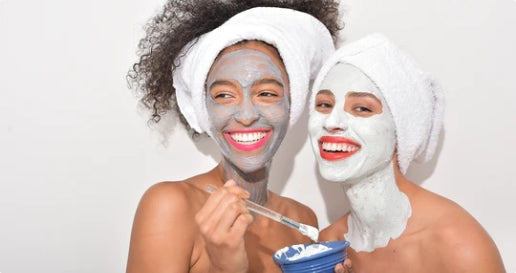
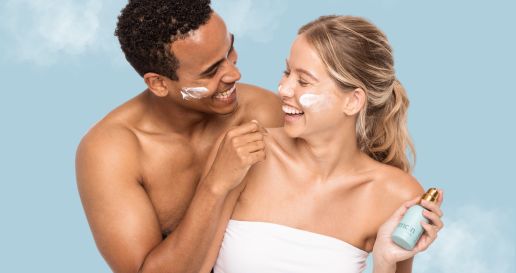

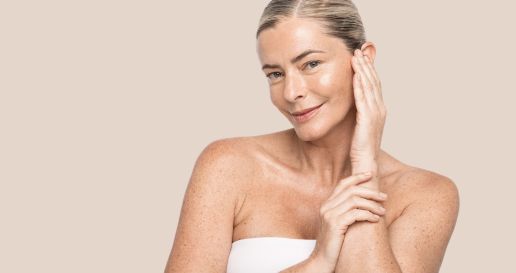
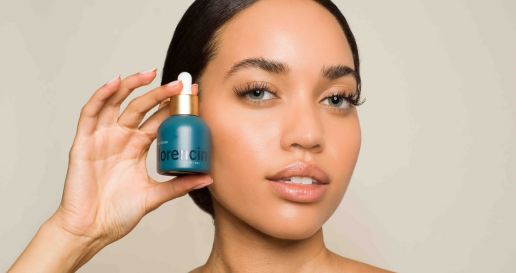
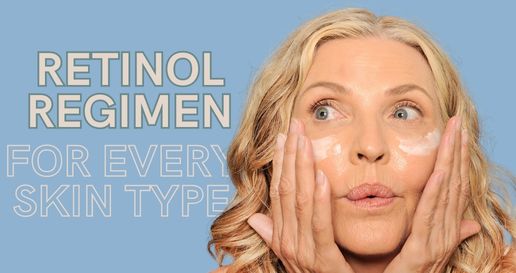
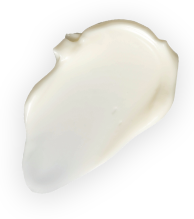 Unlock 15% off your first order
Unlock 15% off your first order